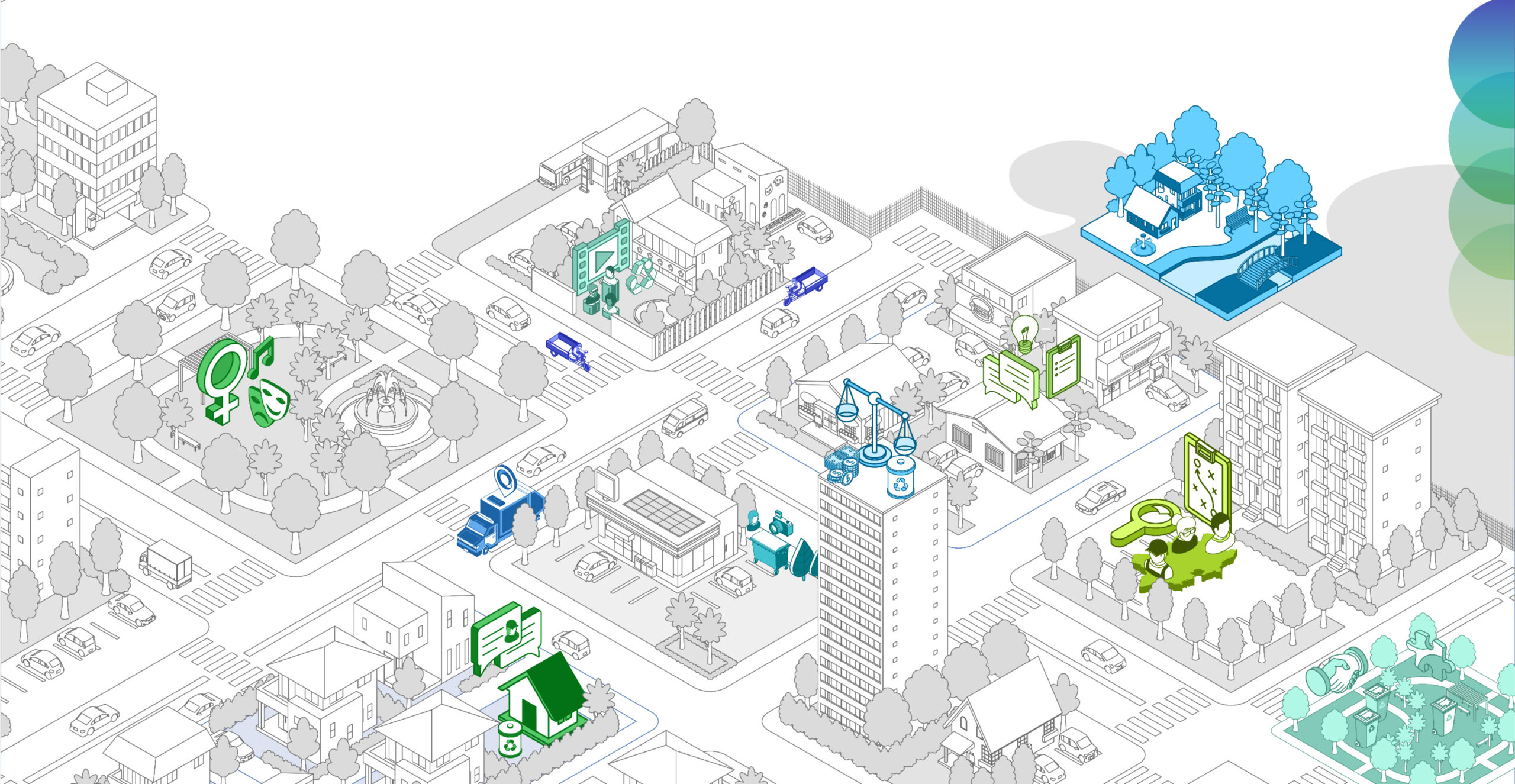Innovation
Process
STAGE 1
MAPPING + LISTENING
Understanding reality to grasp complexity-and then revisiting that reality
What can we learn from these leverage points and weaker connections?
Following the mapping, conversations were held with various actors to understand dynamics and perceptions through a deep listening strategy. Observing behaviors and analyzing community stories was key to identifying people’s real concerns and needs.
It’s essential to distinguish between public, hidden, and meta-narratives. Analyzing these contrasting views—even when they challenge existing data—allows us to address complex systems from a human-centered perspective.
The team gathered narratives from 97 people linked to the waste system, ensuring diversity in gender, age, and background, and covering a wide range of relevant thematic areas.
Guiding interview questions included:
- What is happening right now in Montevideo regarding waste pickers?
- What challenges do you see around the Felipe Cardoso landfill? How does this affect your daily life and that of local residents?
- What opportunities do you see related to the landfill and waste pickers? Are current initiatives sufficient? What else could be done?
- In the current situation, who wins and who loses?
- How do you imagine a more sustainable Montevideo (economically, socially, environmentally)? What role should the city government play?
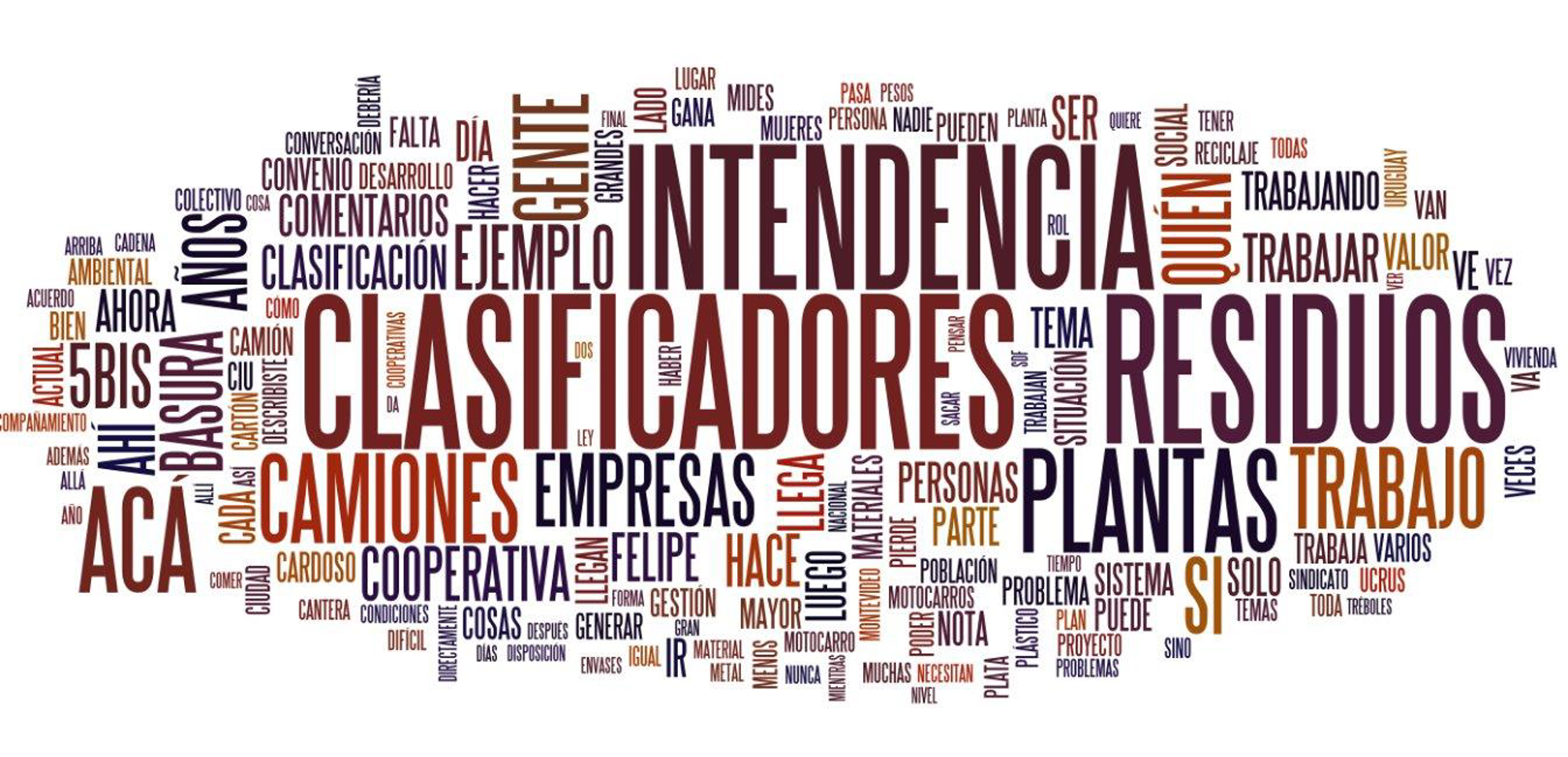
Other listening channels
Secondary sources were also reviewed -official reports, behavioral observations, photos, ethnography (including social media and daily news), analysis of objects, spaces, activities, and emotions- providing a more complete picture of existing actions and key stakeholders.
STAGE 2
COLLECTIVE INTERPRETATION
STAGE 2
COLLECTIVE INTERPRETATION
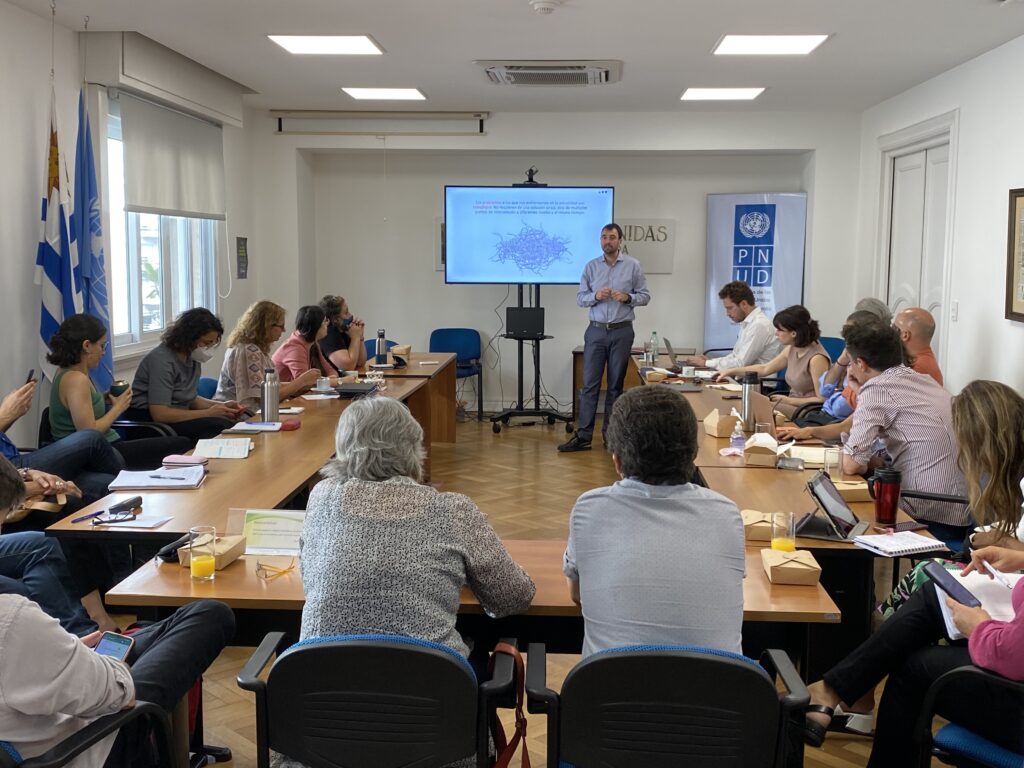
Trigger questions
- Does the system map reflect reality?
- Does it represent the system’s complexity?
- Are all relevant actors included?
- What barriers and enablers can we identify?
The map helped facilitate collective interpretation and was adjusted after each session to better reflect the system. It helped surface barriers and opportunities, sparking new ideas and connections.
Ten sessions were held—some topic-specific (health, gender, sustainable jobs), others cross-cutting—providing spaces for sharing and validating insights and promoting shared narratives.
One key result was the identification of five opportunity areas, with Regulation and Financing as cross-cutting enablers.
Goals of the sessions
- Generate ideas, learning, and shared meaning
- Introduce new perspectives and adapt findings if needed
- Strengthen the participant network
- Validate the analysis
- Ensure participants feel part of a democratized process
- Identify opportunity areas
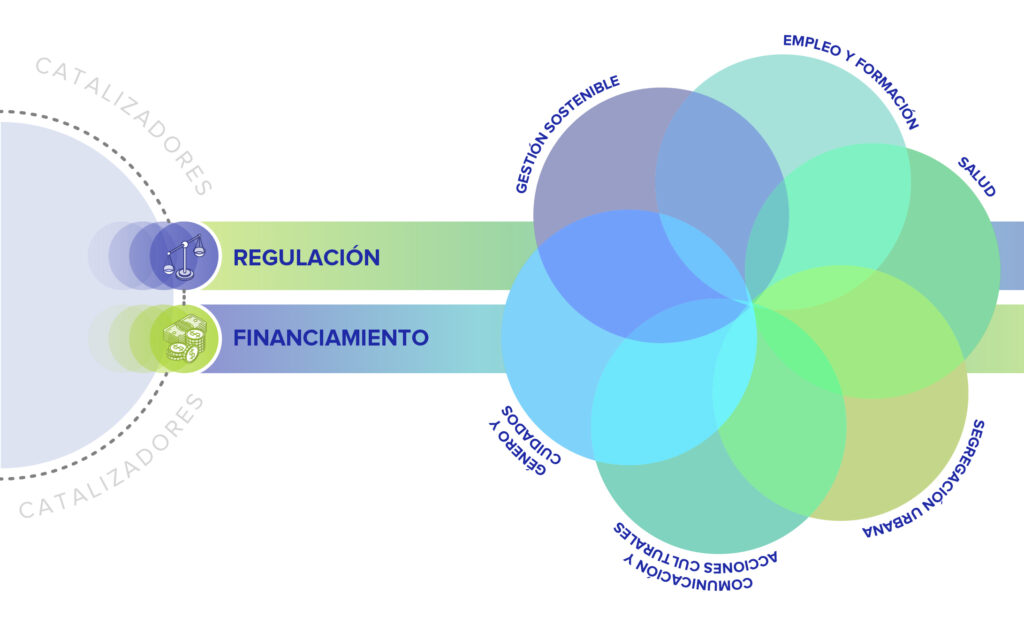
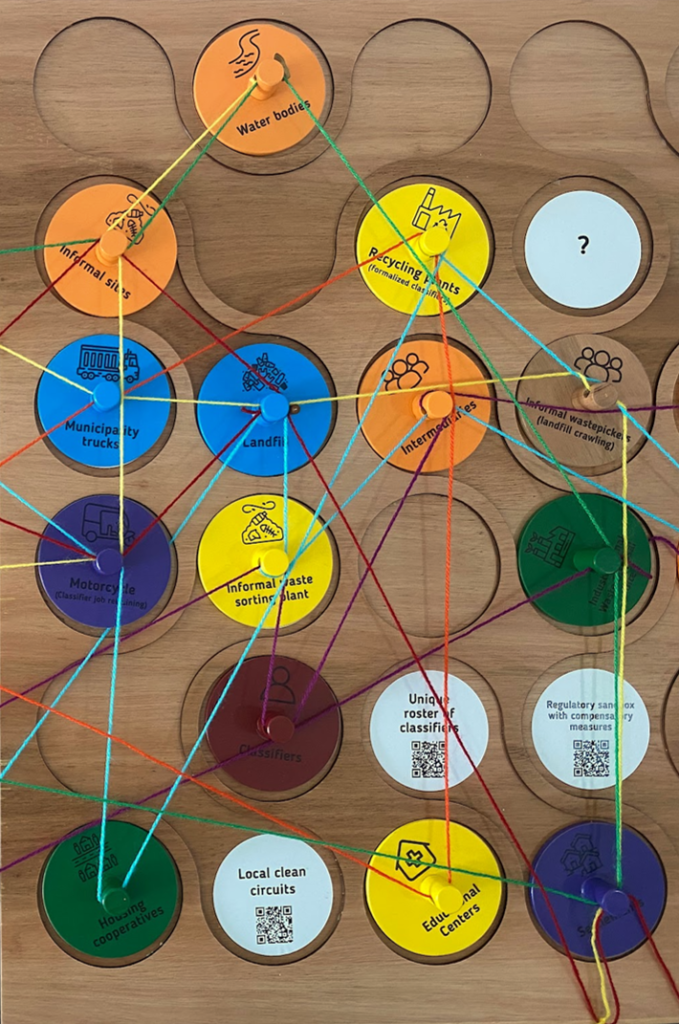
STAGE 3
EXPERIMENTATION PORTFOLIO
The listening process revealed multiple potential interventions across the system. These emerged without requiring initial consensus, creating a “controlled” experimental space where tensions between interventions could be processed fluidly.
Based on deep listening and collective interpretation sessions, a co-designed experimentation portfolio was implemented, including:
Activations
Ideas that were in draft form or had stalled, now activated by the process.
Redesigns
Ongoing initiatives that were adjusted based on feedback from listening and interpretation.
New Developments
Completely new initiatives that emerged from the process.
